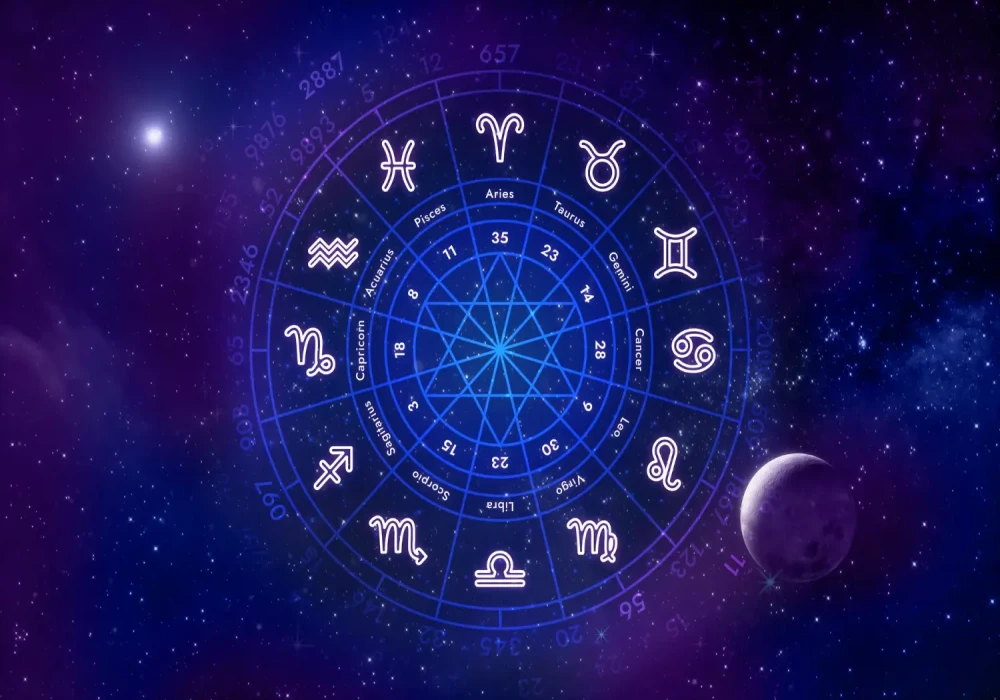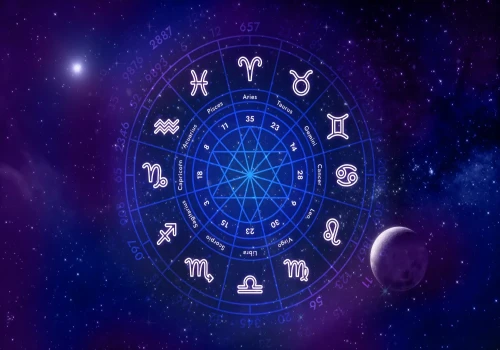
What Are Zodiac Signs?
Zodiac signs are a part of astrology, which is a belief system that suggests a connection between the positions of the stars and planets and events on Earth. There are 12 zodiac signs in total, and each one represents a specific period of the year. These signs are associated with certain personality traits, strengths, weaknesses, and life events.
The 12 zodiac signs are:
- Aries (March 21 - April 19)
- Taurus (April 20 - May 20)
- Gemini (May 21 - June 20)
- Cancer (June 21 - July 22)
- Leo (July 23 - August 22)
- Virgo (August 23 - September 22)
- Libra (September 23 - October 22)
- Scorpio (October 23 - November 21)
- Sagittarius (November 22 - December 21)
- Capricorn (December 22 - January 19)
- Aquarius (January 20 - February 18)
- Pisces (February 19 - March 20)
How Are Zodiac Signs Determined?
Zodiac signs are determined by the position of the Sun at the time of your birth. The sky is divided into 12 sections, each corresponding to one of the zodiac signs. When you are born, the Sun is in one of these sections, and that becomes your zodiac sign.
For example, if you were born between March 21 and April 19, the Sun was in the section of the sky associated with Aries, making you an Aries. Similarly, if you were born between April 20 and May 20, the Sun was in Taurus, making you a Taurus.
The Role of the Sun, Moon, and Planets
While the Sun's position determines your main zodiac sign (also known as your Sun sign), astrology also takes into account the positions of the Moon and the planets at the time of your birth. These elements can further influence your personality and life events.
- Sun Sign: Represents your core personality and ego.
- Moon Sign: Represents your emotions and inner self.
- Rising Sign (Ascendant): Represents how others see you and your first impressions.
The planets (Mercury, Venus, Mars, Jupiter, Saturn, Uranus, Neptune, and Pluto) each rule different aspects of life, such as communication, love, action, luck, and transformation. The positions of these planets in different zodiac signs at the time of your birth are believed to shape your personality and life path.
The Importance of Birth Charts
To understand the full picture of how zodiac signs influence a person, astrologers create a birth chart, also known as a natal chart. This chart is like a map of the sky at the exact moment you were born. It shows the positions of the Sun, Moon, and all the planets, as well as other important points in the sky.
A birth chart is divided into 12 sections called houses. Each house represents different areas of life, such as relationships, career, and health. The zodiac sign that rules each house, along with the planets located in those houses, provides insight into different aspects of a person's life.
Zodiac Elements and Qualities
The 12 zodiac signs are also divided into four elements: Fire, Earth, Air, and Water. Each element represents different characteristics:
- Fire Signs (Aries, Leo, Sagittarius): Energetic, passionate, and enthusiastic.
- Earth Signs (Taurus, Virgo, Capricorn): Practical, stable, and grounded.
- Air Signs (Gemini, Libra, Aquarius): Intellectual, communicative, and social.
- Water Signs (Cancer, Scorpio, Pisces): Emotional, intuitive, and sensitive.
Additionally, each sign has a quality: Cardinal, Fixed, or Mutable.
- Cardinal Signs (Aries, Cancer, Libra, Capricorn): Leaders and initiators.
- Fixed Signs (Taurus, Leo, Scorpio, Aquarius): Stable and determined.
- Mutable Signs (Gemini, Virgo, Sagittarius, Pisces): Adaptable and flexible.
Why Do People Believe in Zodiac Signs?
People are drawn to astrology and zodiac signs for many reasons. Some find comfort in the idea that the stars and planets influence their lives, providing a sense of connection to the universe. Others enjoy reading their daily or monthly horoscopes as a fun way to gain insight into their lives or personalities.
Astrology also provides a framework for understanding oneself and others better. By learning about different zodiac signs and their traits, people often find it easier to understand their own behavior and the behavior of those around them.


